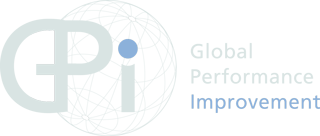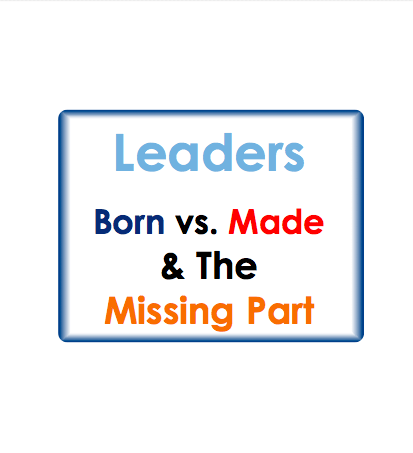
Leaders: Born or Made & The Missing Part
Personal attributes might help you become a good leader, market and company insight are important, the development of your skill sets essential, but there is one aspect we haven’t considered enough in this ongoing search for the truth about nature and nurture.
In a world of growing complexities and dynamics, rapid change has become the single most constant force – with a growing number of opportunities and challenges. This change also impacts the understanding of leader- and followership.
Three Essential Aspects for All Leaders
No doubt we all agree that a leader needs a variety of skills and attributes to be effective.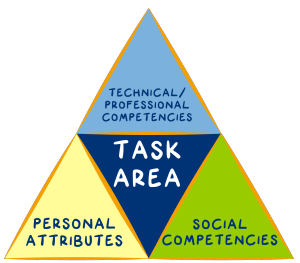
The logic we use below applies not only to leaders but to all professionals. Every job has certain task areas and the one leaders share is their responsibility for people.
Each task area comes with 3 very different sets of ability: professional competencies, social competencies and personal attributes.
Professional competencies cover insight and understanding of the organisation as well as knowledge of products/services. We could also include many functional skills like project management, technical and technological expertise for which one can often get some kind of official approval (e.g. certificate).
Social competencies are those mainly related to interpersonal exchanges. This refers to communication, negotiation, networking and social leadership skills.
Personal attributes are, in many ways, hard-wired characteristics we are born with but also include softer elements such as self-awareness, self-confidence, discipline and resilience.
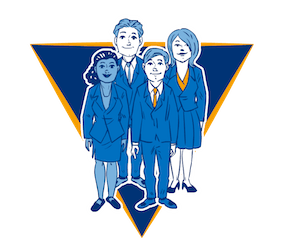 That’s why leaders have to develop and grow. Most of the hard personal attributes we are born with are difficult or nearly impossible to change (e.g. height, stuttering). However, competencies can be developed (mostly through “on the job” experience, feedback or formal training) and soft personal attributes can be improved. We refer to this as growing, rather than developing, because it takes much more time and energy. It has more to do with a person’s upbringing and deep-routed belief system, and often requires personalised techniques such as coaching. We believe this is important to consider because you will only achieve a balanced and healthy outcome if you develop and grow a person.
That’s why leaders have to develop and grow. Most of the hard personal attributes we are born with are difficult or nearly impossible to change (e.g. height, stuttering). However, competencies can be developed (mostly through “on the job” experience, feedback or formal training) and soft personal attributes can be improved. We refer to this as growing, rather than developing, because it takes much more time and energy. It has more to do with a person’s upbringing and deep-routed belief system, and often requires personalised techniques such as coaching. We believe this is important to consider because you will only achieve a balanced and healthy outcome if you develop and grow a person.
In a perfect world all four triangles would be the same size. So the requirements to manage a task area would be evenly matched by the number and level of competencies and attributes.
Is there One Universal Characteristic?
It is usually mentioned as the number one characteristic of successful leaders and therefore worth mentioning at this point.
Authenticity is originally a technical term used in psychology, existentialist philosophy and aesthetics. It is the degree to which we are true to our own purpose and true self, despite external pressures. The inner self manifests itself through behaviours and our actions should be aligned with our values and beliefs.
Research shows that most top leaders and managers earn full marks for their intellectual ability, but low marks for dealing with people. Leaders cannot achieve maximum effectiveness unless they develop
winning relationships with those they lead. Often, this involves moving from an “I” form of leadership based on personal forcefulness, to a “we” form of leadership based on collaboration. Both forms are acceptable; the challenge is to achieve a healthy balance in the journey from personal power to relational power.
This interpersonal effectiveness demands total authenticity, the “life force of relationships”.
Thus, the phrase “know thyself” defines a basic requirement for connecting with others. Authentic leaders:
- listen authentically by being present when others talk to them
- influence authentically by dealing only in straight talk
- appreciate authentically by being sincere and kind
- serve authentically to exercise the core of real leadership
- share stories authentically to inspire others.
Do not assume that you know what your employees or colleagues are thinking or that you have reached them; to know for sure, ask.
Watch Out For Influencing Beliefs
The question of nature and nurture was explored in 2016 by the Center for Creative Leadership in its study, ‘Are Leaders Born or Made? Perspectives from the Executive Suite’. More than 300 C-level executives were interviewed to get their thoughts on this on-going discussion.
About 19 per cent believed leaders were born, 52 per cent believed they were made and 29 per cent that they were equally born and made.
The survey also asked C-level executives what they felt were the most important elements of leadership: traits, experiences or training. Those who believed leaders were made ranked the elements as follows:
1. Experiences, 2. training, 3. traits. On the other hand, those who believed leaders were born ranked traits and experiences as fairly equal, followed by training.
In most organisations the executive level sets the tone and strongly influences the viewpoints of other people in the company. Let’s call that the culture. This also has a huge impact on how people are selected and developed. For instance, if a CEO believes leaders are born, learning professionals might suggest an early identification programme in combination with on-the-job stretch assignments. In contrast, if the C-suite believes leaders are made, ensuring that leadership development is broad-based and inclusive would be more imperative.
The Missing Aspect
In general over 80% of businesses in the Western world operate on 4 levels of culture. Many organisations are hybrids in different areas and others are transitioning from one level to the other, due to internal or external forces requiring them to adapt and change. The 4 types of business culture should be rather obvious to most of us:
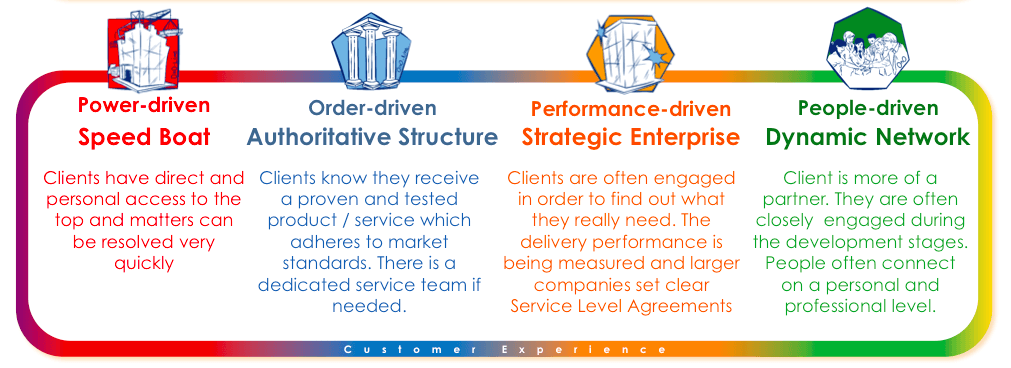
Some essential business aspects, like strategy development, office set-up, communication and leadership style, will vary across businesses. As a logical consequence each organisation needs a different kind of leader. For example, a power-driven start-up entrepreneur may be a very effective leader in his/her environment but may struggle in an order-driven organisation such as most corporations.
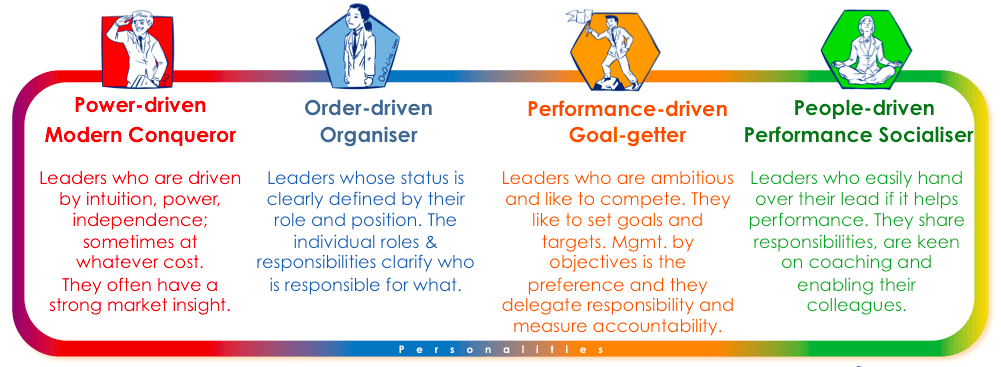
What personality is to an individual, culture is to a group. If we expect a leader to be true to him/herself, it is difficult to imagine a single person operating authentically in different environments. This is not about situational leadership but more like switching between boxing, chess, rowing and basketball. Furthermore, we don’t need to be good at everything. Everyone has his/her place in the world so we would do well to identify our cultural fit and note that it might change over time.
Good Leadership? Be Ready For Change!
An acceleration in pace means we cannot necessarily rely on previous experiences, facts and figures for much longer. Unless we can adapt to the times, we will get left behind. Effective leaders must be comfortable with change; they must practise and teach agility and resilience. Bringing about positive change is never easy. It requires not only abandoning some of the old habits and patterns, but also relentlessly trying new approaches.
We predict that, in the coming two decades, the focus of leadership will move away from the leader towards the followers. This means that, in the future, the most successful leaders will be those who are able to maximise their people’s potential by listening, asking, challenging, supporting and guiding. That is also why coaching will become a mandatory leadership technique in every leader’s portfolio.
Social technologies will start creating a never-seen-before transparency which will have a fundamental impact on companies and on your leadership – being ‘virtually’ in the open and exposed. Given the speed of word of mouth, acting purposefully, ethically and behaving authentically will be vital to one’s performance and success. More dynamic staffing systems will support this and more agile workforces will mean people will follow leaders they choose to follow. In years to come our leadership qualities will also be rated in real-time. So let’s get ready now!
If you want to get personal and answer a few question to receive some personal, direct and meaningful feedback, please go to Pathfinder Freemium Questionnaire & Online Report
